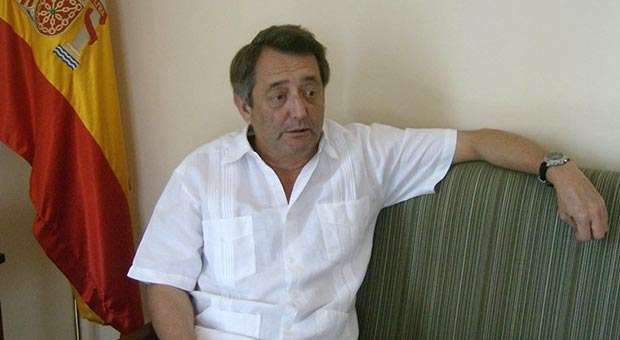With a fairly stable and beneficial to both countries trade flow, Spain stands as the third largest trading partner of Cuba, after Venezuela and China; and opportunities to increase trade and investment flows are even higher due to the reforms in economic policy carried out in Cuba, including the new Foreign Investment Law, which opens more doors to foreign businessmen .
On the current state of economic relations between the two countries, the place of such reciprocity, and the prospects for further ingrain the interests of Cuba and Spain, OnCuba spoke with William Kessler Saiz , Economic and Commercial Attaché at the Embassy of Spain in Havana .
What do you think about the current economic and trade relations between Cuba and Spain?
I think we are at a good level. Spanish exports reached a record high of 785 million Euros in 2008, placing Cuba as the third Latin American market for Spain, after Mexico and Brazil; but at the end of last year we broke that record with a total of 799 million Euros.
Cuba is the first client in Latin America in per capita exports, with over 70 Euros per person imported and represents our sixth market in this region after Brazil, Mexico, Argentina, Chile and Venezuela.
The export of our products is highly diversified and the most relevant items are machines and spare parts for many industries, electrical equipment, supplies for agriculture, lodgment, construction materials, spare parts for cars and trucks, food, and many others.
However, our market share in Cuba has fallen in the last six years, from being the first provider for a long time to take third place.
The main countries from which Cuba imports goods and services are Venezuela, China, Spain and Brazil. The relationship with Venezuela is special, and with the Chinese there have been specific financial transactions.
Venezuela gets most of those imports with a share of 44% comprising almost exclusively, oil. In 2012, our country was the third largest supplier of Cuba, with a share of about 7% of the total, and about 34% of imports from the European Union.
How many offices or branches of Spanish companies are present on the island?
Spain in 2011 occupied the first place among the investors in the island and there were 45 joint ventures with Spanish companies, two cooperated productions, 60 hotel management contracts, which reaffirms our leadership in this field, six contracts of association, were recorded and a contract at risk.
The latest figures show a reduction in these figures, leaving some 30 existing joint ventures and staying in hotel management contracts similar to 2011 figures. Currently we have 228 branches and 13 agencies in Cuba.
What were the main results of the Spanish investment in Cuba ?
In the nineties of the last century, coinciding with the special period of the Cuban economy, facilities were given to foreign investors, both large and small investors in many sectors. As a result, most of the Spanish investments correspond to that time.
However, the trend has been toward increasing selectivity in operations, new or running, looking only for large companies foreign investment in strategic sectors for the country, and to provide capital , technology, or foreign markets. With these requirements is not surprising that the investment flow has stopped, except the politically motivated.
Spanish companies in Cuba are very small. The largest in exports do 20 million Euros a year; and almost all, about a hundred, exported between one to 10 million. This is a much diversified export of small suppliers that send little by little.
Moreover, tourism is an extremely strong sector: 90% of hotel rooms are managed by Spanish groups. We operate through joint ventures or management contracts.
Is there interest in the Spanish entrepreneurs to grow their business in Cuba after the adoption of the new Law on foreign investment?
With the new law Cuba shows a greater willingness to accept foreign investment in various sectors. There has been much interest since its adoption, and many employers ask for the new environment.
This change is seen within the new economic policy in Cuba and, depending on what each company intend to produce, they will find a good position in the Development Zone of Mariel, or beyond.










